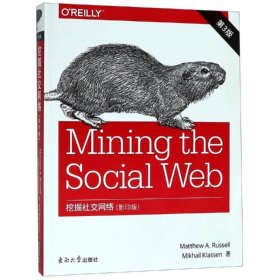
挖掘社交网络(第3版 影印版) 9787564183738
全新正版 _可开发票_极速发货
¥ 70.14 5.7折 ¥ 124 全新
库存4件
天津西青
认证卖家担保交易快速发货售后保障
作者MatthewA.Russell,MikhailKlassen
出版社东南大学出版社
ISBN9787564183738
出版时间2019-06
装帧平装
开本其他
定价124元
货号1201913194
上书时间2024-05-11
- 最新上架
商品详情
- 品相描述:全新
- 商品描述
-
作者简介
马修?A.拉塞尔是BuiIt Technologies的首席技术官,他带领着一个团队,致力于改善建设世界的方式。在夜晚和周末,他会沉思于优选现实,践行着顽强的个人主义,同时为可能到来的僵尸或机器人末日进行训练。
目录
Preface
Part I. A Guided Tour of the So Web
Prelude
1. Mining Twitter: Exploring Trending Topics, Discovering What People Are Talking
About, and More
1.1 Overview
1.2 Why Is Twitter All the Rage?
1.3 Exploring Twitters API
1.3.1 Fundamental Twitter Terminology
1.3.2 Creating a Twitter API Connection
1.3.3 Exploring Trending Topics
1.3.4 Searching for Tweets
1.4 Analyzing the 140 (or More) Characters
1.4.1 Extracting Tweet Entities
1.4.2 Analyzing Tweets and Tweet Entities with Frequency Analysis
1.4.3 Computing the Lexical Diversity of Tweets
1.4.4 Examining Patterns in Retweets
1.4.5 Visualizing Frequency Data with Histograms
1.5 Closing Remarks
1.6 Recommended Exercises
1.7 Online Resources
2. Mining Facebook: Analyzing Fan Pages, Examining Friendships, and More
2.1 Overview
2.2 Exploring Facebooks Graph API
2.2.1 Understanding the Graph API
2.2.2 Understanding the Open Graph Protocol
2.3 Analyzing So Graph Connections
2.3.1 Analyzing Facebook Pages
2.3.2 Manipulating Data Using pandas
2.4 Closing Remarks
2.5 Recommended Exercises
2.6 Online Resources
3. Mining Instagram: Computer Vision, Neural Networks, Object Recognition,
and Face Detection
3.1 Overview
3.2 Exploring the Instagram API
3.2.1 Making Instagram API Requests
3.2.2 Retrieving Your Own Instagram Feed
3.2.3 Retrieving Media by Hashtag
3.3 Anatomy of an Instagram Post
3.4 Crash Course on Artifi Neural Networks
3.4.1 Training a Neural Network to "Look" at Pictures
3.4.2 Recognizing Handwritten Digits
3.4.3 Object Recognition Within Photos Using Pretrained Neural
Networks
3.5 Applying Neural Networks to Instagram Posts
3.5.1 Tagging the Contents of an Image
3.5.2 Detecting Faces in Images
3.6 Closing Remarks
3.7 Recommended Exercises
3.8 Online Resources
4. Mining Linkeflln: Faceting Job Titles, Clustering Colleagues, and More
4.1 Overview
4.2 Exploring the LinkedIn API
4.2.1 Making LinkedIn API Requests
4.2.2 Downloading LinkedIn Connections as a CSV File
4.3 Crash Course on Clustering Data
4.3.1 Normalizing Data to Enable Analysis
4.3.2 Measuring Similarity
4.3.3 Clustering Algorithms
4.4 Closing Remarks /
4.5 Recommended Exercises
4.6 Online Resources
5. Mining Text Files: Computing Document Similarity, Extracting Collocations, and More.
5.1 Overview
5.2 Text Files
5.3 A Whiz-Bang Introduction to TF-IDF
5.3.1 Term Frequency
5.3.2 Inverse Document Frequency
5.3.3 TF-IDF
5.4 Querying Human Language Data with TF-IDF
5.4.1 Introducing the Natural Language Toolkit
5.4.2 Applying TF-IDF to Human Language
5.4.3 Finding Similar Documents
5.4.4 Analyzing Bigrams in Human Language
5.4.5 Reflections on Analyzing Human Language Data
5.5 Closing Remarks
5.6 Recommended Exercises
5.7 Online Resources
6. Mining Web Pages: Using Natural Language Processing to Understand Human
Language, Summarize Blog Posts, and More
6.1 Overview
6.2 Scraping, Parsing, and Crawling the Web
6.2.1 Breadth-First Search in Web Crawling
6.3 Discovering Semantics by Decoding Syntax
6.3.1 Natural Language Processing Illustrated Step-by-Step
6.3.2 Sentence Detection in Human Language Data
6.3.3 Document Summarization
6.4 Entity-Centric Analysis: A Paradigm Shift
6.4.1 Gisting Human Language Data
6.5 Quality of Analytics for Processing Human Language Data
6.6 Closing Remarks
6.7 Recommended Exercises
6.8 Online Resources
7. Mining Mailboxes: Analyzing Whos Talking to Whom About What,
How Often, and More
7.1 Overview
7.2 Obtaining and Processing a Mail Corpus
7.2.1 A Primer on Unix Mailboxes
7.2.2 Getting the Enron Data
7.2.3 Converting a Mail Corpus to a Unix Mailbox
7.2.4 Converting Unix Mailboxes to pandas DataFrames
7.3 Analyzing the Enron Corpus
7.3.1 Querying by Date/Time Range
7.3.2 Analyzing Patterns in Sender/Recipient Communications
7.3.3 Searching Emails by Keywords
7.4 Analyzing Your Own Mail Data
7.4.1 Accessing Your Gmail with OAuth
7.4.2 Fetching and Parsing Email Messages
7.4.3 Visualizing Patterns in Email with Immersion
7.5 Closing Remarks
7.6 Recommended Exercises
7.7 Online Resources
8. Mining GitHub: Inspecting Software Collaboration Habits, Building Interest Graphs,
and More
8.1 Overview
8.2 Exploring GitHubs API
8.2.1 Creating a GitHub API Connection
8.2.2 Making GitHub API Requests
8.3 Modeling Data with Property Graphs
8.4 Analyzing GitHub Interest Graphs
8.4.1 Seeding an Interest Graph
8.4.2 Computing Graph Centrality Measures
8.4.3 Extending the Interest Graph with "Follows" Edges for Users
8.4.4 Using Nodes as Pivots for More Efficient Queries
8.4.5 Visualizing Interest Graphs
8.5 Closing Remarks
8.6 Recommended Exercises
8.7 Online Resources
Part II. Twitter Cookbook
9. Twitter Cookbook
9.1 Accessing Twitters API for Development Purposes
9.2 Doing the OAuth Dance to Access Twitters API for Production Purposes
9.3 Discovering the Trending Topics
9.4 Searching for Tweets
9.5 Constructing Convenient Function Calls
9.6 Saving and Restoring ]SON Data with Text Files
9.7 Saving and Accessing JSON Data with MongoDB /
9.8 Sampling the Twitter Firehose with the Streaming API
9.9 Collecting Time-Series Data
9.10 Extracting Tweet Entities
9.11 Finding the Most Popular Tweets in a Collection of Tweets
9.12 Finding the Most Popular Tweet Entities in a Collection of Tweets
9.13 Tabulating Frequency Analysis
9.14 Finding Users Who Have Retweeted a Status
9.15 Extracting a Retweets Attribution
9.16 Making Robust Twitter Requests
9.17 Resolving User Profile Information
9.18 Extracting Tweet Entities from Arbitrary Text
9.19 Getting All Friends or Followers for a User
9.20 Analyzing a Users Friends and Followers
9.21 Harvesting a Users Tweets
9.22 Crawling a Friendship Graph
9.23 Analyzing Tweet Content
9.24 Summarizing Link Targets
9.25 Analyzing a Users Favorite Tweets
9.26 Closing Remarks
9.27 Recommended Exercises
9.28 Online Resources
Part III. Appendixes
A. Information About This Books Virtual Machine Experience
B. OAuth Primer
C. Python and Jupyter Notebook Tips and Tricks
Index
内容摘要
社交网站数据如同深埋地下的“金矿”,如何利用这些数据来发现哪些人正通过社交媒介进行联系?他们正在谈论什么?或者他们在哪儿?本书第2版对上一版内容进行了全面更新和修订,它将揭示回答这些问题的方法与技巧。你将学到如何获取、分析和汇总散落于社交网站(包括Facebook、Twitter、LinkedIn、Google+、 GitHub、邮件、网站和博客等)的数据,以及如何通过可视化找到你一直在社交世界中寻找的内容和你闻所未闻的有用信息。
相关推荐
— 没有更多了 —





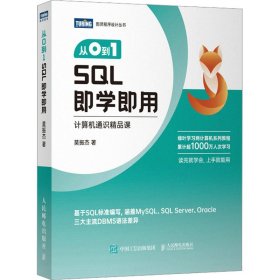








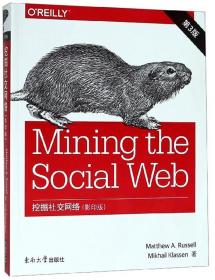
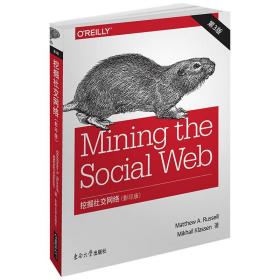

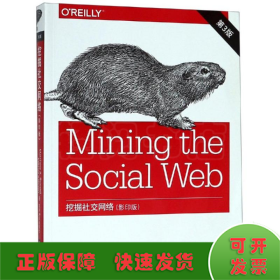
以下为对购买帮助不大的评价